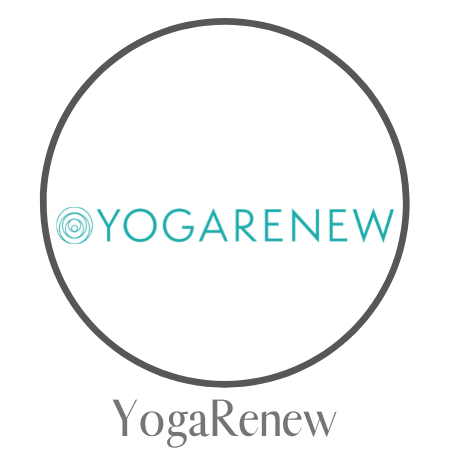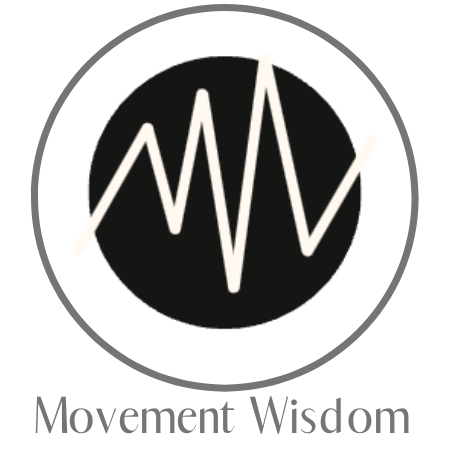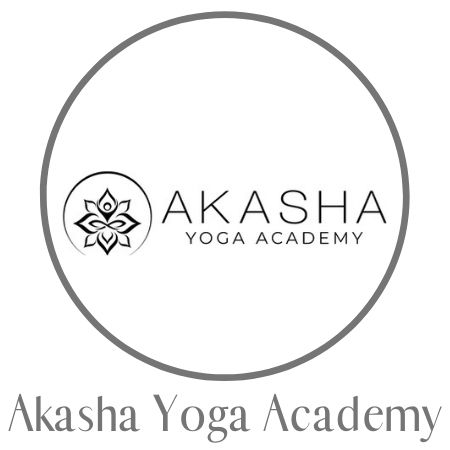Out of all the classic yogic texts, The Hatha Yoga Pradipika is one that should be on your study list. It is the first Yogic text detailing the Hatha Yoga system, which many modern yoga styles, like Vinyasa Yoga, are built on.
But what exactly can The Hatha Yoga Pradipika teach us, and how do these ancient lessons relate to our modern lives?
Read on for a fast yet thorough dive into the Pradipika…
Article content:
(Click any link below to jump directly to section)
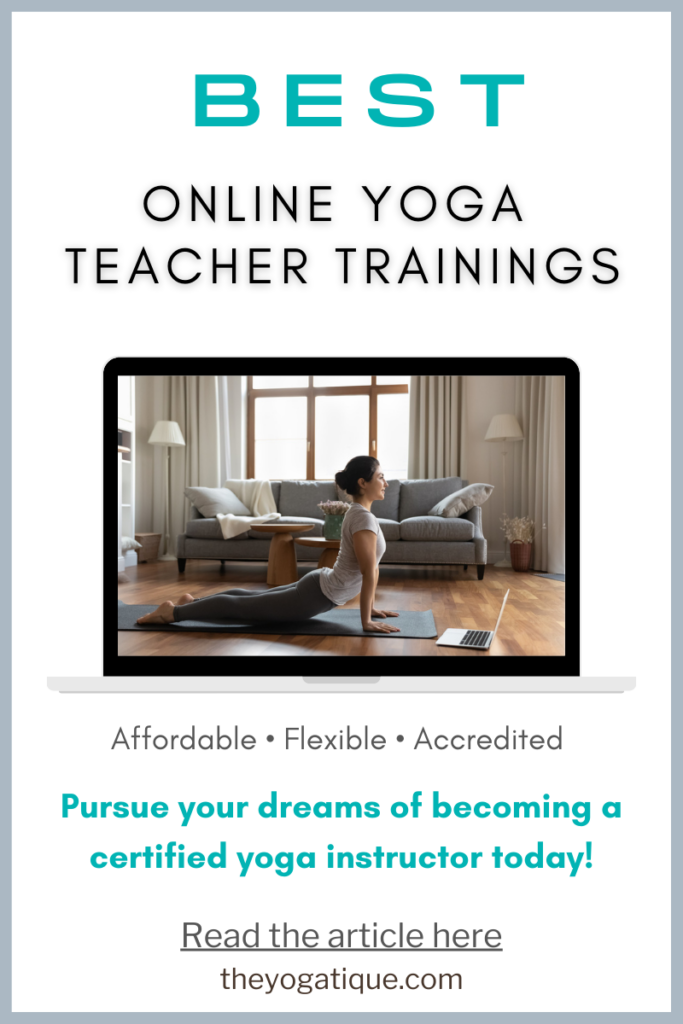
THE YOGA TEACHER TRAINING
YOU'VE BEEN LOOKING FOR.
Online Yoga Teacher Training Offers
- Affordability
- Flexibility
- Certification
- Lifetime access
⬇Click below to discover the best Yoga Alliance registered online yoga certifications enrolling now⬇
What is the Hatha Yoga Pradipika
The Hatha Yoga Pradipika is significant because it's believed to be the oldest surviving text on Hatha Yoga. Thus, the Pradipika preserves ancient yogic knowledge, such as the asanas and breathing exercises.
In Sanskrit, Pradipika means “to cast light” or “to illuminate,” so the text is often described as the first book to shed light on the Hatha yoga practice.
The Hatha Yoga Pradipika is also a guide on spiritual awakening and self-realization (enlightenment). It discusses many spiritual concepts like:
- Prana (life force energy)
- Chakras (energy centers)
- The opposing forces within the body (masculine and feminine energies)
Who wrote the Hatha Yoga Pradipika
Yogi Swami Swatmarama is the author of the Hatha Yoga Pradipika. The highly revered Indian sage wrote the sacred text during the 15th century as a compilation of the earlier haṭha yoga texts.
While the Hatha Yoga Pradipika is a foundational Yoga text, not much is known about Swami Svatmarama. Because of the lack of biographical information, there is some debate about whether Svatmarama is the true author.
The four chapters & basic principles of the Hatha Yoga Pradipika
The Hatha Yoga Pradipika consists of four chapters detailing the basic principles of Hatha yoga. The four chapters are:
- Chapter one: focuses on Asana. It discusses how asana practice benefits the physical body and the ten rules of conduct and personal observances.
It also details what can bring success and cause failure in Yoga; “Overeating, exertion, talkativeness, adhering to rules, being in the company of common people and unsteadiness (wavering mind) are the six causes which destroy yoga.” - Chapter two: is about Shatkarma and Pranayama. It details spiritual concepts like the three nadis and the importance of breath retention.
- Chapter three: is about the mudras and bandhas. It links to Kundalini yoga as it talks about the awakening of Shakti.
It also links to tantra yoga and the power of sexual energy; “Therefore the knower of Yoga conquers death by preserving the Bindu (semen). Release of the semen means death; conservation of semen is life.” - Chapter four: discusses Samadhi, referring to it as the ultimate goal of Yoga. Swatmarama explains that Samadhi comes when a person who practices Yoga develops a sound body and a sound mind.
⬇Yoga Alliance registered yoga teacher trainings you should look into⬇
5 key takeaways from the Hatha Yoga Pradipika
The Hatha Yoga Pradipika reminds us that Yoga is more than just creating fancy postures with our body. It guides us to deepen our practice so that our spirit, mind, and body unite. Here are my five key takeaways from this ancient yogic text:
- Yoga is holistic
- Yoga brings us into higher states of consciousness
- The importance of Breath Control (Pranayama)
- The power of Mudras and Bandhas
- The goal of spiritual realization
1. Yoga is holistic
The Hatha Yoga Pradipika advocates a holistic approach to Yoga, addressing the physical, energetic, and mental aspects. Chapter 2 highlights the importance of purifying the energy channels and cultivating mental focus for spiritual growth.
“Perfection of hatha yoga is achieved when there is leanness of the body, tranquil countenance, manifestation of the inner sound, clear eyes, diseaselessness, control of Bindu, active digestive fire, and purification of nadis.” II:78
2. Yoga brings us into higher states of consciousness
While Hatha Yoga primarily focuses on the physical body, the Pradipika explains that Hatha helps us reach higher yogic paths, like Raja Yoga. The practices in the text serve as a foundation for achieving mental clarity and meditative absorption.
3. The importance of breath control (Pranayama)
The Hatha Yoga Pradipika highlights the significance of pranayama in the yogic journey. Pranayama is described as a powerful tool for purifying the energy channels and preparing the mind for meditation.
4. The power of Mudras and Bandhas
While mudras and bandhas are not common in most modern Hatha yoga classes, the text reminds us that these are integral components of Hatha Yoga. These practices redirect and control the flow of prana within the body, aiding in awakening spiritual energy.
5. The goal of spiritual realization
According to the Pradipika, the ultimate goal of Yoga is Samadhi, a state of spiritual realization. These texts give insight into what we will gain when we do this; the mind ceases to produce thoughts.
Sure, this may not be the goal of most modern-day practitioners. However, the teaching emphasizes the importance of going beyond our individual selves to connect with universal consciousness.
“One who desires complete dominion of yoga should thus explore the nada (unstruck sound) with an attentive mind and abandon all thoughts.” 4:93

5 yoga poses from the Hatha Yoga Pradipika every yogi should know
The Hatha Yoga Pradipika describes 15 yoga postures in detail and mentions many more. Let's take a look at five that are found in almost every yoga class today:
1. Siddhasana
Siddhasana, also called the accomplished pose, is a pose you likely do in every yoga class without realizing it. Siddhasana is a seated pose where you tuck your feet into your thighs. This brings the feet much closer to the groin than in Easy Pose (Sukhasana), giving a deep stretch to the hips, adductors, knees, and ankles.

2. Paschimottanasana
Paschimottanasana, also called seated forward bend, is a seated forward fold with outstretched legs and the feet touching.
Paschimottanasana stretches the hamstrings, hips, and spine. The Pradipika says that when you practice It, your digestive fire increases. This is because the pranic currents rise through Sushumna Nadi (the central channel).

3. Bhujangasana
Bhujangasana, also called cobra pose, is a popular back-bending asana performed when lying on the belly. It strengthens the shoulders, arms, and lower back muscles while stretching the chest and lengthening the spine.
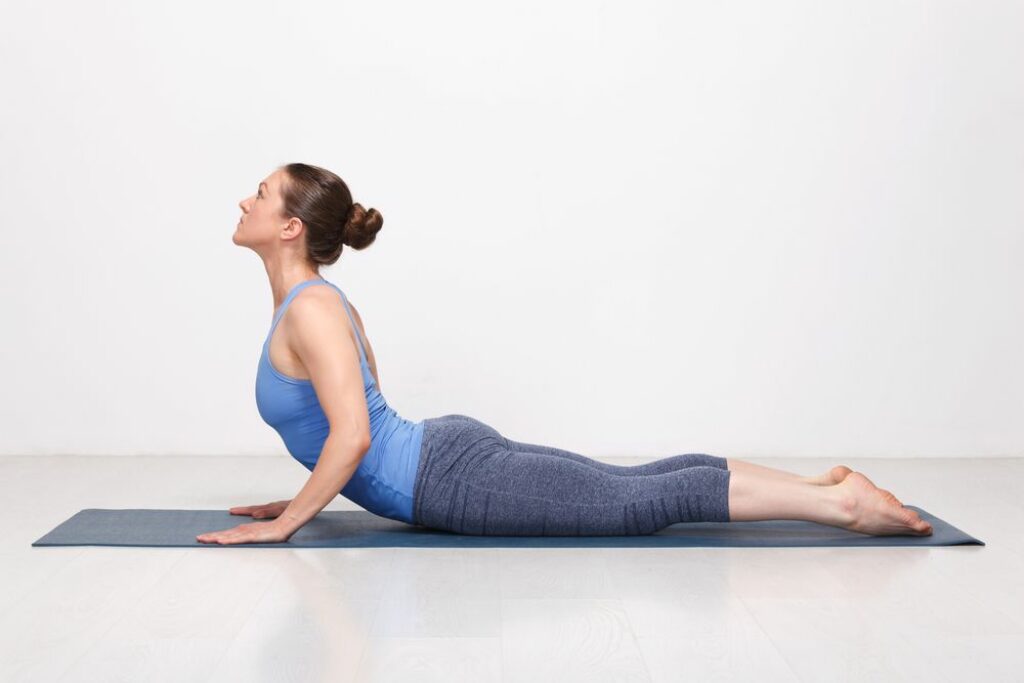
4. Sarvangasana
Sarvangasana, also called shoulder stand, is a calming inversion that brings the legs and heart above the head. It improves blood circulation, calms the nervous system, and strengthens the shoulders and neck.
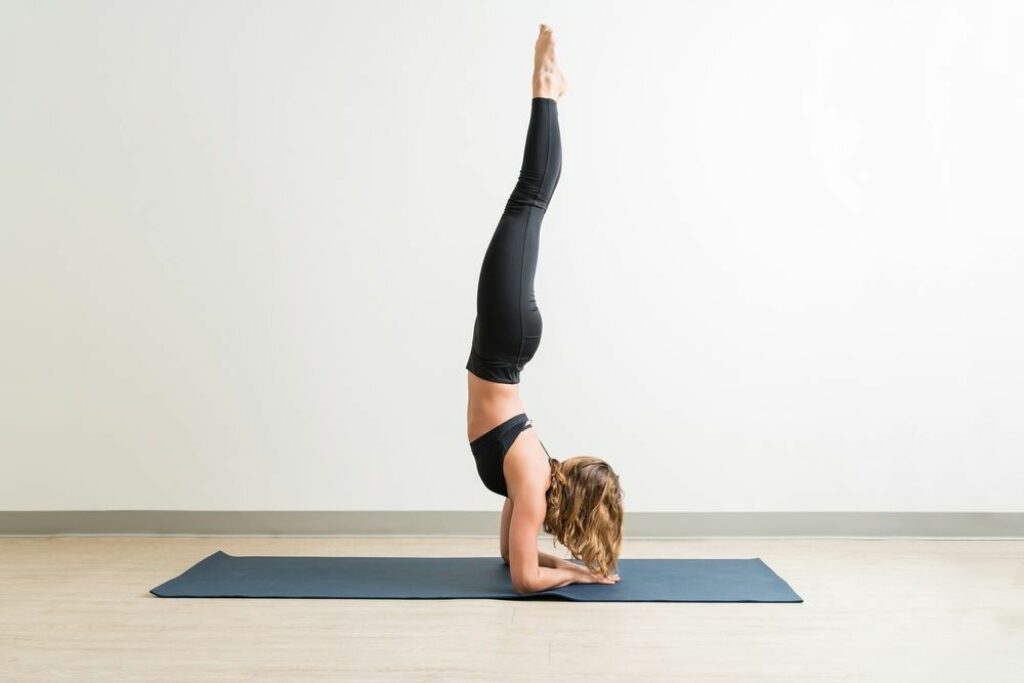
5. Shavasana
Shavasana, also called corpse pose, is the last posture practiced in a Hatha yoga class, yet the most important. You lay on your back with your arms by your side, eyes closed, and your entire body relaxed. Shavasana allows your body, mind, and spirit to soak up the benefits of the practice, promoting spiritual awareness.

Takeaway on the Hatha Yoga Pradipika
Hatha Yoga is the foundation for many modern yoga practices. So, as Hatha Yoga Pradipika is the first Yogic text detailing this system, it gives us insight into the true essence of traditional Yoga.
In particular, it introduces us to the lesser-known yet profound aspects of Yoga, such as mudras, mantras, and subtle energies.
Some online yoga studios, online yoga teacher training programs, and brands that we write about may offer us a small commission should you decide to make a purchase or signup after reading our content. Thank you for enabling us to exist!


